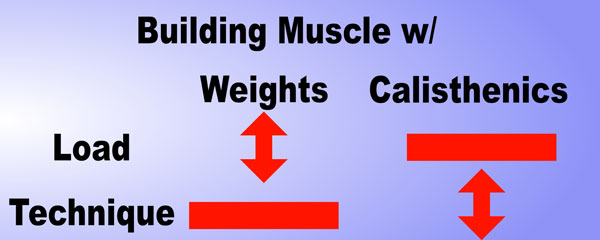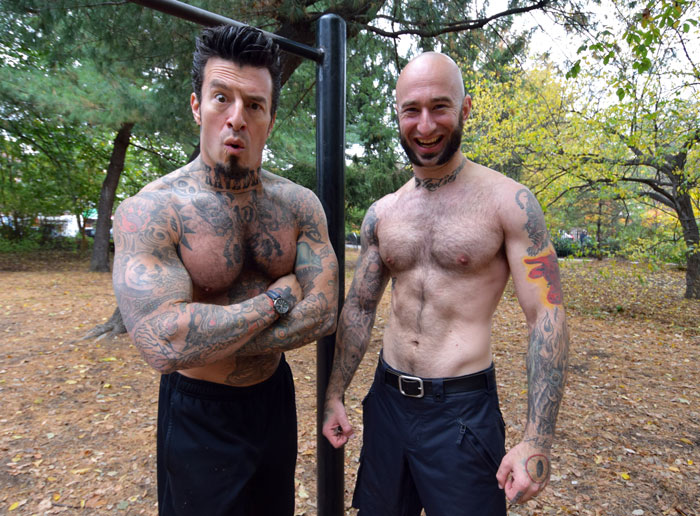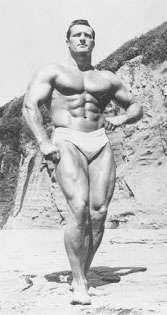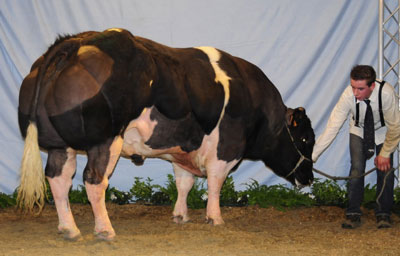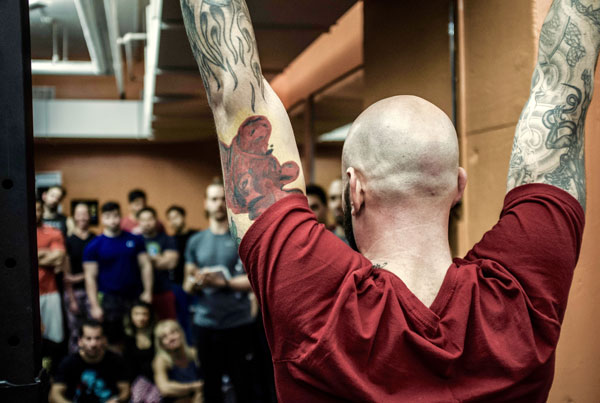
Building muscle has always been my main objective and it probably always will be. This is just as true with my calisthenics training as it was when I hoisted the iron. I wouldn’t have anything to do with progressive calisthenics if I harbored even the slightest doubt that it could pack on beef.
I fully believe it’s possible to gain muscle with calisthenics, which I know is a perception that’s a little left of center from many who seek bigger arms and a wider back. I credit my unusual perception to the fact that I don’t think like most people when it comes to building muscle, much less building it with calisthenics. Here are some of the biggest ways my mind has shifted over the years:
It’s Not About My Routine
I follow a very simple workout routine that’s based off of the Veterano plan in Convict Conditioning. It’s simple, basic and easy to wedge into my schedule. One thing’s for sure, I certainly don’t credit it with building muscle.
I depend on my routine like a rocket depends on a launch pad. It provides structure, balance and points me in the right direction. Beyond that, I don’t expect much else from it. I don’t believe it’s the key to building muscle or dialing in some secret combination that’s going to bring me success.

I also don’t concern myself too much with rep ranges. I don’t shoot for a specific range of reps that’s supposedly best for building muscle. I’ve been successful with low reps, high reps and everything in between. As far as I’m concerned the best rep range for building muscle is always how many reps I can do now, plus one more.
It’s Not About My Diet
I used to eat super clean back in the day. The funny thing is, I made much faster gains when I loosened up and ate a pretty liberal diet. These days, there’s not a whole lot I won’t and don’t eat, from steamed broccoli to ice cream.
When it comes to muscle hypertrophy, a healthy diet is part of the recovery process. This means a good diet should remove stress from your life, not increase it. This goes for both physical and mental stress. A diet that causes guilt, cravings and unsatisfied hunger is an unhealthy diet. After all, how can a diet be considered healthy if it’s just one more thing you need to recover from? That’s like taking a vacation that stresses you out!
Most of my diet is pretty basic. Lots of plant foods and some protein at each meal is key. I keep treats as treats and generally stay away from beverages with sugar and calories. I eat what I like, when I like and how I like. Most of the time that means whipping up a stir fry or a kale salad with salmon. Sometimes it means ordering pizza and downing a beer or two.
I also don’t “eat big to get big.” I’ve tried that method many times but it always just made me softer. Admittedly, I have eaten more when I’m making gains from time to time. The difference is I’m not making gains because I’m eating more. I’m eating more because I’m making gains. I just listen to my body and trust that it will ask for more when it needs it. If it’s not telling me it needs more food then I respect that as well.
It’s Not About My Equipment
I used to work for a store that sold home fitness equipment. Everyday I heard the idea that getting results was all about using the right equipment. I crammed my small apartment full of gadgets and doo-dads believing it was the key to success.
It’s funny how things change. These days, all I want is a solid pull-up bar and I’m good to go. I’ve learned that 99.99% of success in training depends on how you use your muscles, not whether a weight machine is designed with the correct “vector articulation angles.”
This is why I’m always a fan of simple equipment like a pull-up station, kettlebell or gymnastics rings. The less you have to think about your gear, the more you can think about what you’re doing.
So if it’s not so much about the diet, the routine or the equipment, what is it about?
Well, to be honest, there’s not much I concern myself with. In fact, there are only 3 things I ever think about when it comes to my training:

Pretty much everything I do boils down to just those three things. Even though that list is pretty short, each aspect of muscle tension can become a discipline in and of itself. I’ve made it my mission to study and learn as much as I can about each one to help me build more muscle.
To start off, I’ve become obsessed with tension control. Ever since I came across the book Muscle Control by Maxick, I’ve made it a habit to practice tensing my muscles on a daily basis. Granted, I’m not striking a bodybuilding pose in the middle of a meeting. I just lightly tense up my lats, abs or glutes a few times throughout the day. It’s not much, but I’ve found this habitual tension makes a massive difference in controlling my muscle tension in my workouts.
I also don’t rely on a certain technique to control my muscle tension. If I want my triceps to work harder in pushups I know it’s up to me to make it happen. Controlling muscle tension is the responsibility of my mind, not necessarily the exercise I’m doing.
I’m also constantly working on dialing in my technique to adjust the resistance of every exercise I do. My Taekwon-Do instructor always taught me to think like a technician in my training. We would drill down to the slightest details that might seem trivial, but can make all the difference in the world.
For example, when doing a push up, where is the weight on your hands? Is it more towards the palm or the fingers? Speaking of fingers, which fingers have more weight on them? Are you gripping with your fingers to tense up your hand and forearm? Which fingers are gripping harder? Are they pulling tension towards your thumb? Which direction is the thumb pointing? Is any of this changing as you lower yourself to the floor? Does it change even still when you push back up? How about if you pause at the top? What happens if you slightly twist like Angelo Grinceri teaches in Intrinsic Strength Training?
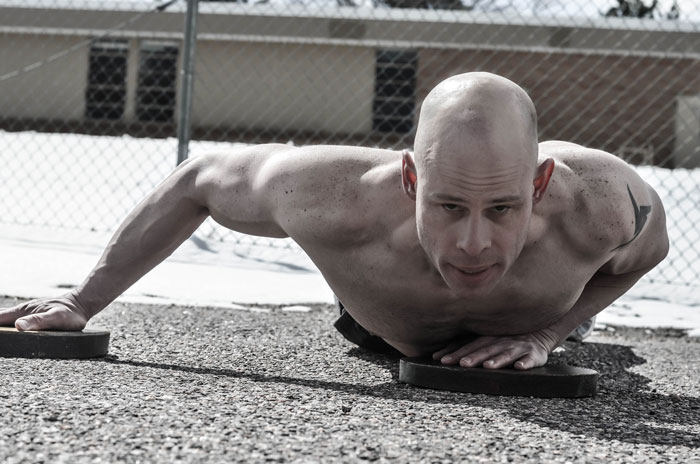
I could keep writing pages about every little detail but the point is, all of these technical details serve to not only help control where tension is in the body, but how much of it is in various muscles. The slightest technical shift can make a huge difference in how much tension is in a given muscle. Every workout I do is an experiment to discover and master these small adjustments to make my muscles work as hard as possible.
Third, as Coach Wade explains in C-Mass, stimulating muscle growth is about working the muscles to a high state of fatigue. This is why I’m always working on increasing the time under tension with any exercise. Sometimes, this means doing an extra rep. Other times, It’s just half a rep or even just holding an isometric position for a couple of extra seconds at the end of the set. As long as I’m enduring just a little bit more time under tension I’m stimulating some muscle growth.
Finally, I don’t get too caught up in numbers and quantification. Sure, I keep a workout log but what’s most important to me is how an exercise feels from one workout to the next. Controlling muscle tension is just as much an artistic and sensual experience as cooking, painting or playing music. If you’re finding it easier to pop up into a handstand or do a pull up, you are making progress even if the numbers in your log don’t immediately increase.
****
Matt Schifferle, PCC Team Leader a.k.a. The Fit Rebel made a switch to calisthenics training 5 years ago in an effort to rehab his weight lifting injuries. Since then he’s been on a personal quest to discover and teach the immense benefits of advanced body weight training. You can find some of his unique bodyweight training methods at RedDeltaProject.com and on his YouTube channel: RedDeltaProject.
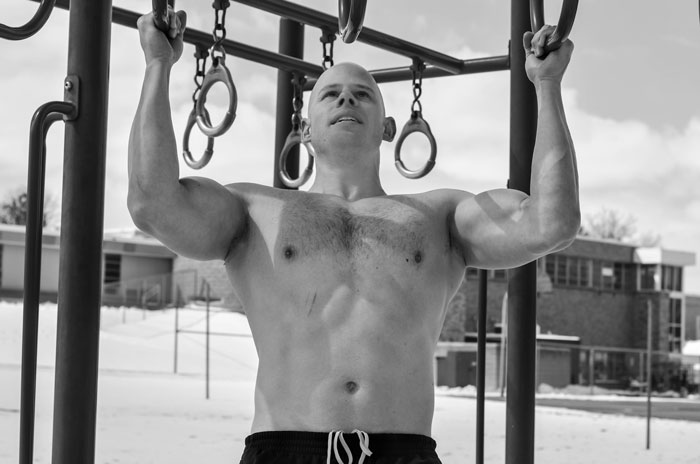
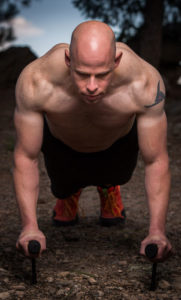 Advantage #1 Low maintenance training
Advantage #1 Low maintenance training